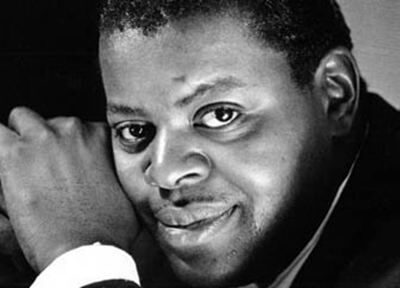2 Unusual Oscar Peterson Jazz Exercises
 Do you want to learn 2 unusual Oscar Peterson jazz exercises?
Do you want to learn 2 unusual Oscar Peterson jazz exercises?
I’ve had a lot of students ask me who I studied when I was an up and coming jazz pianist.
We’re all constantly looking for ways to maximize our return on investment with our jazz piano practice time right?
Well, I’m reaching out to you today to set the record straight.
When I sat down there was 1 guy that I studied that really made a drastic improvement of my playing.
This guy was Oscar Peterson. I’ve probably transcribed about 35 Oscar solos over the years.
He’s my go to source for blues and bebop mixed together.
I learned a TON about jazz improvisation from Oscar.
Way too many to list in 1 email but I wanted to share 2 nuggets today that I learned from.
#1 How To Correctly End Your Rhythmic Phrases
Oscar was a master at mixing short “riffy” type ideas with long virtuosic flowing bebop type lines and piano runs.
When he played it always sounded like he was speaking through his fingers.
One of the big reasons he sounded so “conversational” when he played was that he always resolved his lines with rhythmic clarity.
The more I dug into Oscar’s playing the more I realized he actually had worked out specific rhythmic endings to resolve his phrases with.
- For example, in the last bar of a 4 bar phrase he’d end tons of his lines with 2 eighth notes on beat 1 and then the & of 1.
No matter what song he was jamming on I heard him use this rhythmic ending constantly!
(By the way, Miles Davis used this one too).
Another one he used all the time was ending his phrase on the “& of 3”.
Again, hundreds of licks I learned from him featured this rhythmic ending.
Now, there are lots of others he used but if you start adding those in your phrases it will help you sound a lot more conversational too.
How To Take 1 Lick & Transform It Into 1000 Oscar Peterson Jazz Exercises
One thing that I noticed over and over again in the Oscar solos was that certain licks would pop up again over and over again.
Interestingly though, they sounded different and unique in every song.
He was a master at breaking up a 1 lick and transforming it into an infinite amount of new licks.
This is because he’d often break up a lick into 1 and 2 beat “cells” and then string them together with other 1 and 2 beat cells.
It was almost like legos.
With legos, all the pieces have the same shape on the bottom so they can also connect together easily.
And you can make a million different things depending on your imagination.
And Oscar showed that you can do the same thing with jazz licks.
Once you learn how to break them apart you can also come up with a million different ideas. Sky’s the limit.
You can make a million of your own Oscar Peterson jazz exercises!
So, going forward you should also start thinking about your licks as 1 and 2 beat cells a well. This will unlock so many new ideas for you!
Anyway, these 2 little Oscar Peterson jazz exercises and concepts should get you started. Start throwing them into your playing and reap the rewards.
It’s amazing when it all comes together.
Now if you’re need some help putting tons of Oscar Peterson discoveries into your own playing I’ve got an entire program that shows you how. And I’ve broken down the entire learning system for you right here https://www.freejazzlessons.com/jazzmastersmethod
Until next time, enjoy your jazz studies and piano practice.
Sincerely,
Steve “Oscar Peterson Jazz Exercises” Nixon
P.S. You’ll also be studying 7 other jazz legends: Bill Evans, Herbie Hancock, Diana Krall, Chick Corea, Barry Harris, Red Garland and Bud Powell in the program. It’s a great way to skyrocket your improv skills quick. Plus, it’s fun.
It’s all found right here —–> https://www.freejazzlessons.com/jazzmastersmethod
